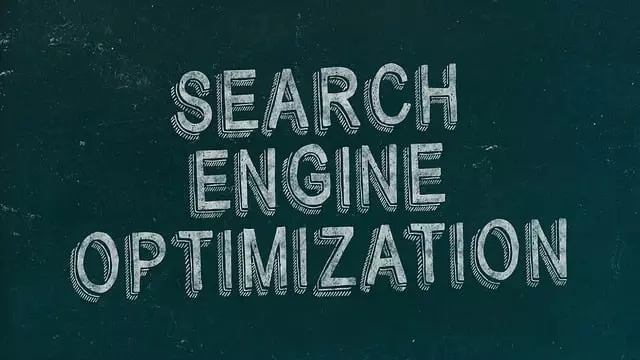Understanding and optimizing Core Web Vitals Optimization (CWVO), encompassing Load Time, Interactivity, and Stability, is a pivotal aspect of Technical SEO. By focusing on these metrics, webmasters can enhance search engine rankings while boosting user experience across devices and browsers. Key metrics like Largest Contentful Paint (LCP), First Input Delay (FID), and Cumulative Layout Shift (CLS) offer insights for identifying and resolving issues like slow loading times or heavy image sizes. Tools like Google Search Console, Google Analytics, and PageSpeed Insights are vital for monitoring and optimizing these aspects. On-Page SEO strategies, including optimized content and structured data, further enhance discoverability and user engagement. Site Speed Analysis, with a focus on CWVO, is crucial for improving mobile-first indexing criteria set by Google. Effective optimization involves strategic planning, data-driven decisions, and continuous monitoring to ensure a high-performing website that ranks well in search engines while providing an excellent user experience.
In today’s digital landscape, Technical SEO is no longer an option—it’s a necessity. This comprehensive guide delves into the core fundamentals of Technical SEO Tools Training, focusing on crucial aspects like understanding Core Web Vitals as the foundation for optimization and leveraging popular tools to unlock site performance potential. By exploring key metrics, on-page techniques, and mobile-first indexing strategies, this article equips you with the knowledge to enhance user experience and drive better search rankings through effective Core Web Vitals Optimization.
Understanding Core Web Vitals: The Foundation of Technical SEO

Understanding Core Web Vitals is essential for any Technical SEO strategy. These vital metrics, encompassing Load Time, Interactivity, and Stability, serve as the foundation for evaluating a website’s user experience. By optimizing these core aspects, webmasters can significantly enhance their site’s performance in search engine rankings.
Core Web Vitals Optimization ensures that pages load swiftly, interactions are responsive, and content remains stable across devices and browsers. This not only improves user satisfaction but also signals to search engines that the website is reliable and worth ranking higher. Effective optimization strategies involve leveraging tools to identify bottlenecks and making data-driven decisions for continuous improvement.
Key Metrics for Optimization: Identify Areas for Improvement

When assessing a website’s performance and identifying areas for optimization, understanding key metrics is crucial. These metrics provide insights into user experience, site speed, and overall health, which are all vital factors in search engine rankings. Core Web Vitals Optimization is a central focus here, as it directly impacts how users perceive and interact with your site. Key metrics to monitor include Largest Contentful Paint (LCP), First Input Delay (FID), and Cumulative Layout Shift (CLS). LCP measures the time it takes for the main content of a page to load; FID refers to the speed at which a page responds to user interactions; and CLS tracks any sudden layout shifts that may occur.
By analyzing these metrics, you can pinpoint problem areas and make data-driven decisions for improvement. For example, if LCP is high, it could indicate slow server response times or heavy image sizes. Addressing such issues through image optimization, code refactoring, or leveraging browser caching can lead to significant improvements in user experience and search engine rankings. Regularly reviewing these metrics allows you to stay agile in your SEO strategy, ensuring that your website remains competitive in the digital landscape.
Popular Technical SEO Tools: Unlocking Their Potential

In today’s digital landscape, Technical SEO Tools have become indispensable for optimizing websites and enhancing their visibility on search engines. Among the myriad options available, some stand out as game-changers in the field. Google Search Console and Google Analytics top the list due to their comprehensive insights into website performance and user behavior. These tools offer valuable data on crawl errors, index coverage, and key metrics that drive decision-making.
Another powerful asset is PageSpeed Insights, a tool that focuses on Core Web Vitals Optimization—a crucial aspect for providing users with a seamless browsing experience. By evaluating page loading times and other performance indicators, it helps identify areas for improvement, ensuring your website not only ranks higher but also delivers outstanding user satisfaction.
On-Page Optimization Techniques: Enhancing User Experience

On-Page optimization is a critical aspect of Technical SEO, focusing on improving individual web pages to boost search rankings and user experience. It involves various techniques tailored to make your website more relevant, accessible, and engaging for both search engines and visitors. One such powerful technique is Core Web Vitals Optimization. This strategy revolves around ensuring the key performance indicators that matter most to users—load time, interactivity, and visual stability—are optimized. By focusing on these core web vital metrics, you can enhance your website’s perceived quality, encouraging lower bounce rates and higher user engagement.
Implementing On-Page SEO strategies effectively means creating content that not only ranks well in search engines but also provides a seamless browsing experience. This includes optimizing title tags, meta descriptions, header tags, and internal linking structures to guide both users and search algorithms through your site’s content. Additionally, leveraging alt text for images, ensuring mobile responsiveness, and implementing structured data markup all contribute to improving the discoverability and accessibility of your web pages, ultimately fostering a better user experience.
Site Speed Analysis: Strategies for Accelerating Performance

Site Speed Analysis plays a pivotal role in Technical SEO, with a significant impact on user experience and search engine rankings. By evaluating key metrics like page load time, you can identify bottlenecks and implement strategies to accelerate performance. Core Web Vitals Optimization is at the heart of this process, focusing on interactivity, stability, and visual reliability to ensure your site provides a seamless experience for all visitors.
Utilize specialized tools to assess these factors, pinpointing areas that need improvement. From compressing images and leveraging browser caching to optimizing code and reducing redirect chains, each step contributes to faster loading times. Remember, quicker sites not only enhance user satisfaction but also signal to search engines your commitment to delivering valuable content efficiently.
Mobile-First Indexing: Ensuring Responsiveness and Accessibility

Mobile-first indexing is a Google initiative that emphasizes the importance of mobile-optimized websites in its search rankings. With most internet users accessing sites via smartphones and tablets, this approach ensures that content is displayed effectively across all devices. To stay relevant, website owners must ensure their sites are responsive, loading quickly and seamlessly on smaller screens while maintaining functionality and accessibility.
Core Web Vitals Optimization plays a crucial role here. It involves monitoring key metrics like page load time, interactivity, and visual stability to deliver an excellent user experience. By optimizing these vital signs, webmasters can make their sites more mobile-friendly, thereby enhancing performance in search engine results. This strategy not only caters to mobile users’ needs but also aligns with Google’s criteria for indexing, pushing your website towards higher rankings.
Implementing Changes: A Step-by-Step Guide to Successful Optimization

Implementing changes for optimization is a strategic process that requires careful planning and execution. It starts with identifying areas for improvement, which can be achieved through in-depth website audits using specialized tools. Once these pain points are uncovered, a prioritized list of tasks should be created, focusing on quick wins and long-term goals. Core Web Vitals Optimization, for instance, involves addressing key metrics like Largest Contentful Paint (LCP), First Input Delay (FID), and Cumulative Layout Shift (CLS) to enhance user experience and search rankings.
A step-by-step guide could include: assess current performance using analytics tools, pinpoint bottlenecks with Web Vitals monitoring solutions, make data-driven decisions by analyzing the findings, implement changes in website code or content, test and verify improvements through A/B testing or page speed insights, and finally, monitor ongoing progress to ensure sustained optimization. This systematic approach ensures that each step contributes to a successful optimization journey, leading to better search engine visibility and user engagement.
